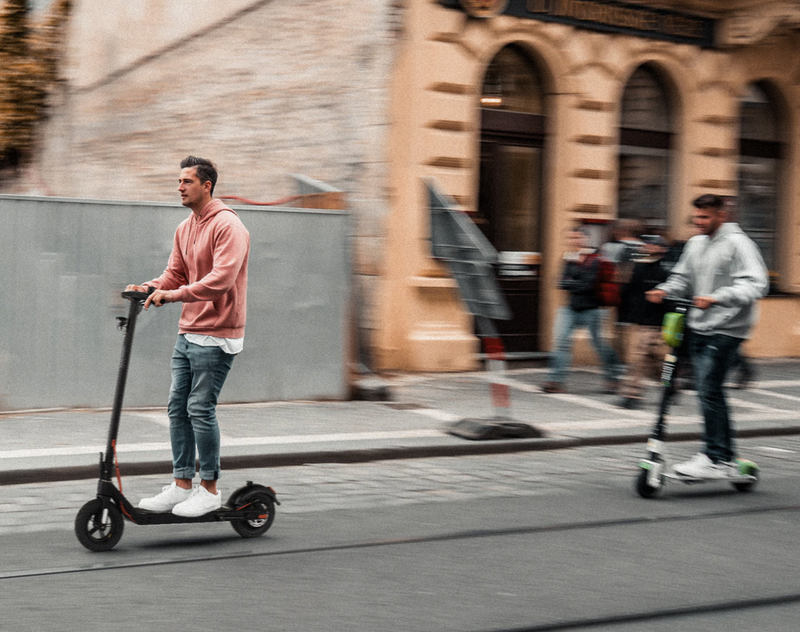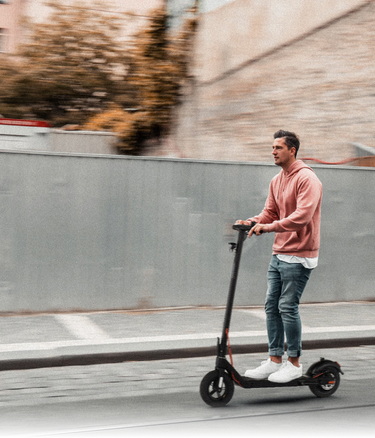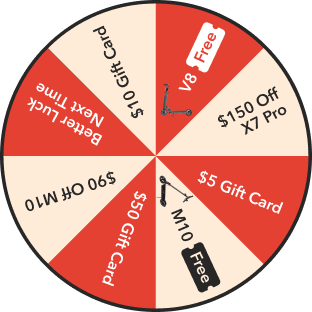In every electric motor scooter, the pivotal electric scooter motor resides within the hub of one or both wheels, ensuring seamless operation. This motor is the driving force behind the wheels, delivering the necessary power for movement. Furthermore, it plays a decisive role in dictating the top speed, acceleration, and overall performance of the vehicle.
Your electric motor scooter's "powerplant" is a DC electric motor. It influences the vehicle's top speed, acceleration, capacity to climb hills, power usage, and overall efficiency. High-performance scooters will feature two motors, while other electric scooters have at least one.
The majority of electric scooters have brushed DC motors. When buying a scooter, it is helpful to utilize electric motor scooter motor power (also known as motor watts) to compare the performance of several scooters roughly. You should be able to accelerate more quickly, reach your peak speed faster, and climb hills more easily with more power.
Part 1. Electric Scooter Motor Power
The electric scooter motor power rating for almost all electric motor scooters is expressed in watts. The unit of power measurement known as a watt is the joule per second or energy per second. The motor's wattage or watts indicate how much power the motor can use. A motor with high wattage can use up a lot of energy quickly.
In general, higher electric scooter motor power will give you higher top speed, better hill climbing capability and load capacity, and to some extent, longer range. However, the actual motor power produced depends on the actual riding situation, such as going uphill or downhill, moving through traffic, and turning or avoiding obstacles.
Here is a brief breakdown of different electric scooter motors with different watts:
Peak power is the power that a motor can continuously handle for a brief period before overheating. The scooter will run at full power in an ideal situation with no traffic obstructions and the ideal temperature. The peak power shows that this is the case.
The best statistic to use when choosing an e-scooter is the "real power." This number represents the maximum energy the scooter's motor can handle constantly. It is the greatest amount of power that your vehicle can use while running continuously.

Part 2. Electric Scooter Motor Torque
This is an important element as the torque of an electric scooter motor is a measurement of the force required to turn the wheel and move you forward. In nations that use the imperial system, torque is expressed in pounds-foot (lb-ft). However, you will see it in Newton-meters (Nm) in nations that use the metric system.
For the most part, today's electric scooter producers do not list their torque output specs. However, you can calculate torque by applying a different formula and dividing the motor's maximum wattage by its maximum revolutions per second (revolutions per second (RPS) or Power (W) = Torque (Nm) x RPS).
DC electric motors generate zero torque at their maximum, unloaded revolutions per second and their highest torque at zero revolutions per second (also known as "stall torque"). You may calculate torque by dividing the motor power by the maximum rotations per second. Half of the maximum torque and maximum RPM corresponds to peak power production.
Part 3. Electric Scooter Motor Performance
Generally speaking, motor power is a crude method to assess how well various electric scooters work. The scooter with the stronger motor ought to accelerate more quickly and support bigger loads. However, this measurement is silent on motor efficiency.
Additionally, various manufacturers appear to use different methods to estimate motor watts (or optimistically). Although you may use it to compare scooter performance somewhat, it is not the only factor determining how well a scooter performs.
It is not the best way to evaluate the performance of different motors because a motor's reported power does not account for how efficient it could be in the real world. A scooter is clearly operating better if it accelerates more quickly and can carry bigger loads than another scooter.
Use the manufacturer's wattage numbers simply as a reference if you wish to compare the performance of one electric scooter to the other. Never use it to compare the real performance of one electric scooter to that of another.

Part 4. Hub Motors vs. Chain-drive Motors
There is no additional complex system for hub motors. Therefore, hub motors require less maintenance, are simpler to fix, and have fewer breakdowns. Hub motors have the potential to use less energy.
Hub motors and chain-drive motors can be configured more effectively than the other. Chain-drive motors have some energy loss due to the friction that chains and gears produce. Hub motors are not affected by it.
Chain-drive motors are more expensive than hub motors and are less heavy than hub motors. However, hub motors may provide less torque due to the absence of gears. Lower climbing angles and peak speeds will be the effect of it.
The ability to customize chain-drive motors is also brilliant. However, changing the wheel will be more challenging on a hub motor.
Hub motors come in two main types: geared hub motors and gearless hub motors. Gearless hub motors use a magnetic field to move the bike forward, while geared hub motors use a planetary gear reduction mechanism to connect the stator and casing of the motor. This allows the wheel to spin at a slower driving speed while enabling the geared motor to operate at greater and more efficient rates.

Part 5. Brushed Motors vs. Brushless Motors
Brushed motors were one of the earliest commercial uses for transferring electrical energy to mechanical energy. These motors have been employed in commercial and industrial settings for about 140 years.
By alternately powering various coil phases, the brushed DC motor brushes pull along the interior of the motor and create motion. With this motor, prolonged usage causes the brushes to wear down owing to friction, which can cause dangerous voltage fluctuations. The kind of e-scooter battery you're using will also affect voltage irregularities.
In contrast to a brushed DC motor, a brushless motor uses a digital switching circuitry instead of a mechanical element to power different coils at different times. Knowing your e-ID scooter's number is also crucial if you need to repair the motor or other parts.
Since they are more reliable, effective, and perform better than brushed motors, brushless motors have grown in popularity.
Brushless motors are additionally quieter and less prone to overheating. Brushless DC motors are preferable over brushed motors in practically all electrical applications.
Today's best scooters include a brushless DC motor, such as the fantastic TurboAnt V8. TurboAnt V8 relies on a brushless motor and offers an excellent ride. This dual-battery electric motor scooter offers the following perks at your fingertips:
- 450 W brushless motor (Front motor)
- 20 mph maximum speed
- 50 miles maximum range (15 Ah dual-battery system)
- 2 x 7.5 Ah dual batteries (deck battery + detachable stem battery)
- 275 lb. load capacity
- 9.3-Inch pneumatic tires
- Dual-spring rear suspension

Part 6. How to Maintain the Electric Scooter Motor?
The electric scooter's motor is often one of the most dependable components and doesn't require frequent repairs. The majority will feature almost maintenance-free brushless DC hub motors. The controller or battery will likely be at fault if your motor doesn't turn. Here are some pointers for maintaining your electric scooter motor.
- Avoid abusing your scooter by continuously operating it at top speed and try to avoid pushing it up hills that are too steep.
- You should take your electric scooter to a repair shop once a year to ensure everything is in working order.
- If your scooter has a chain-drive motor, all you have to do to keep it smoothly running is lubricate the chains around once every few months.
check out Electric Scooter Motor Not Running? How to Fix? for more.
Conclusion
You now have all the information you want regarding an electric scooter motor. So, you must consider several elements to make an informed selection while purchasing your best model. These factors include the scooter's weight, maximum carrying capacity, and motor power, among many others.





















